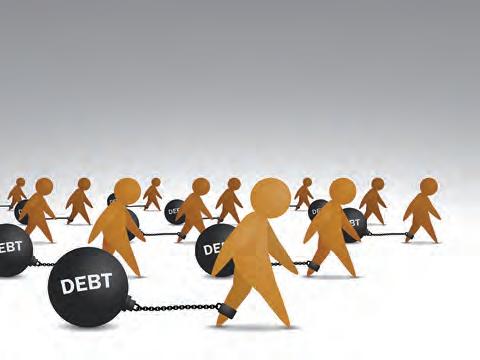“c04AggregateDemandPoliciesAndDomesticEconomicStability_PrintPDF” — 2022/6/7 — 8:31 — page 310 — #24
PR O
O
FS
Of course, budget deficits certainly have their place over the shorter term, especially when the economy is weak and in need of stimulus. However, if not carefully managed, government debt can get out of hand. The economic woes experienced by some European countries (Greece, Italy, Spain, Cyprus) are all examples of what might happen if there are far too many budget deficits. In particular, the country may lose its strong AAA credit rating (which allows it to borrow at lower interest rates), because of the increased risk of default on repayments. The government would also be in a weakened financial position to deal with an economic crisis, if it already had high levels of debt and no fighting fund accumulated from previous budget surpluses. In addition, debt run up now adds to the burden on future generations who are left to pay it back through higher taxes and/or lower budget outlays on important services. Either way, continued budget deficits would lower their living standards.
Resources
G
PA
Weblinks Ways that governments reduce federal debt Deficits & debts
E
Resourceseses
4.5 Activities
CO RR EC
Find all this and MORE in jacPLUS
Access additional questions
TE
Receive immediate feedback and access sample responses
D
Students, these questions are even better in jacPLUS
4.5 Quick quiz
Track your results and progress
4.5 Exercise
4.5 Exercise
Define the term budget outcome. 2 marks Describe the three types of budget outcome. 3 marks Explain how a budget deficit might be financed. 2 marks Explain how money from a budget surplus might be used. 2 marks a. Distinguish the following pairs of terms: i. A budget deficit and a budget surplus 2 marks ii. A headline budget deficit and an underlying budget deficit. 2 marks b. Assume the government runs a budget deficit of $215 billion. Identify and outline the various options available to the government for financing this deficit. 3 marks c. Identify two important economic problems associated with running budget deficits in the long-term. 2 marks d. Identify two important advantages of reducing the deficit and returning to budget surplus as soon as possible. 2 marks e. Explain the medium-term operational goal of budgetary policy. 2 marks
U
N
1. 2. 3. 4. 5.
310
Key Concepts VCE Economics 2 Units 3 & 4 Eleventh Edition

































